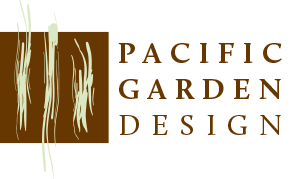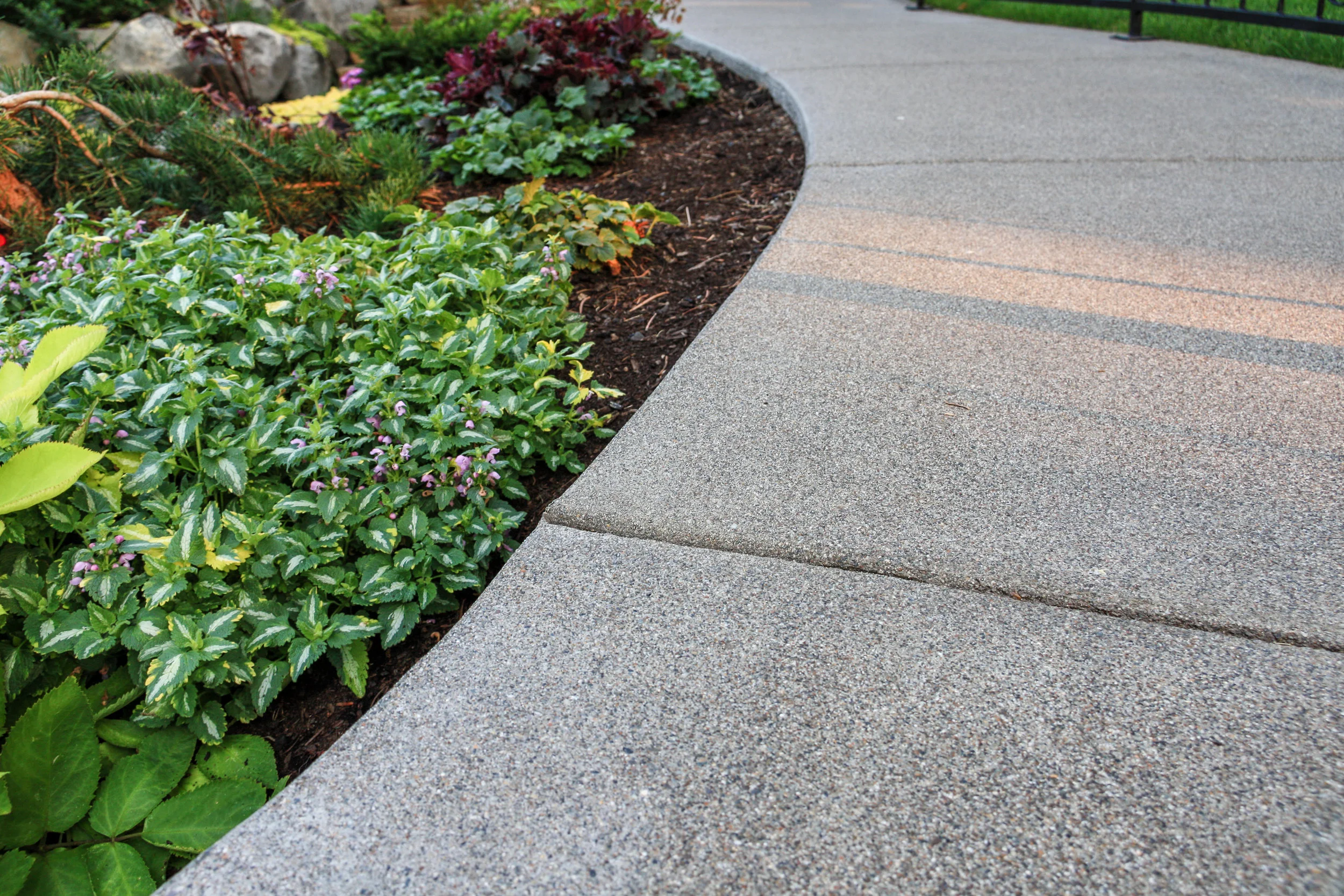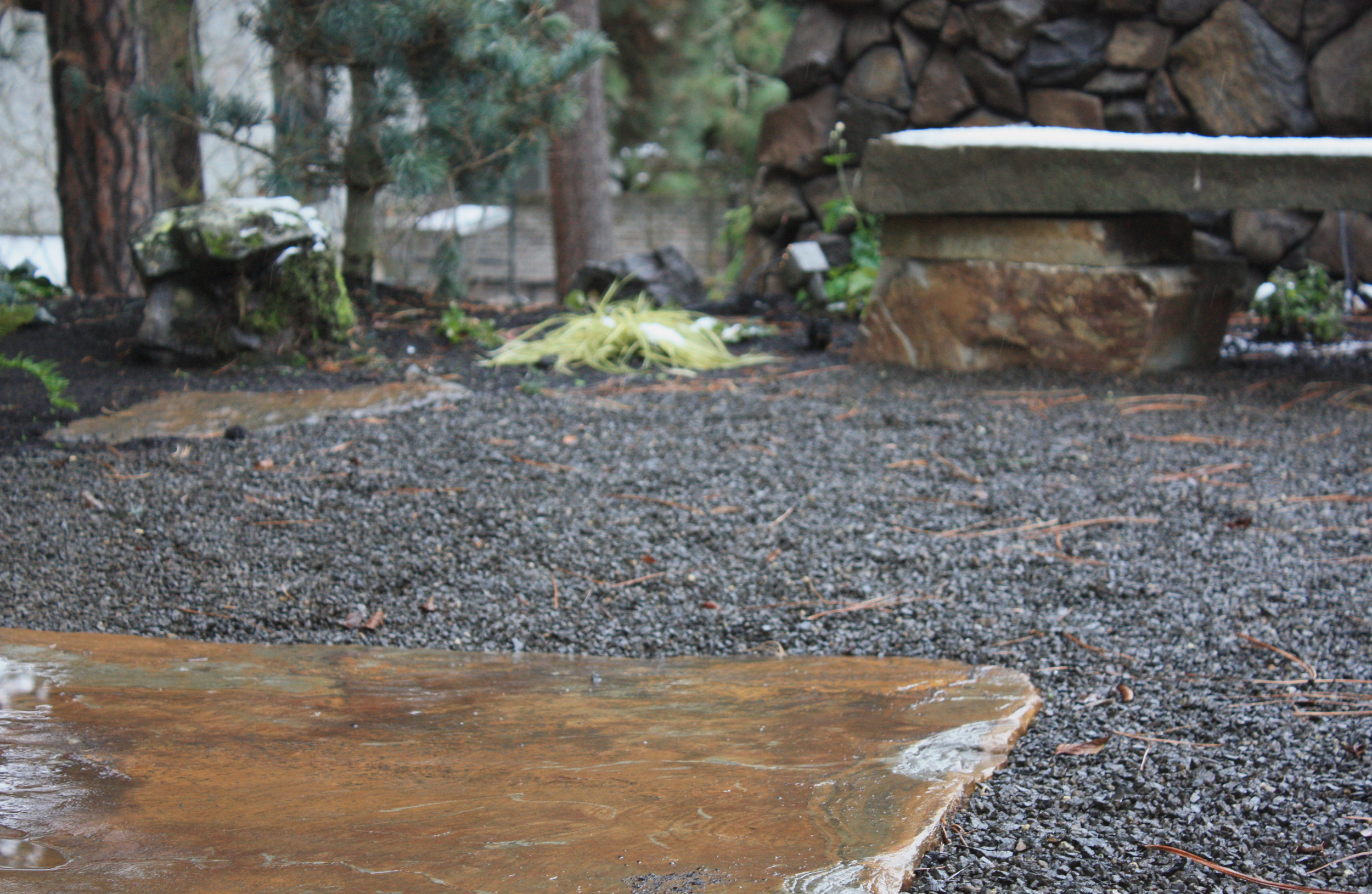A patio is often the central element of a residential landscape. It provides a space for gathering or entertaining, becoming an extension of the indoors. The specifics of a patio can be customized endlessly to suit the needs and lifestyle of the homeowner, but there are a few broad categories of material to choose from.
Poured Concrete Patios
Poured concrete is by far the most popular choice for an outdoor patio. It comes in a range of colors and textures (see our post on concrete finishes here), which makes it suitable for any style of landscape. Concrete provides a smooth, flat surface that is easy to walk across and is a perfect setting for outdoor furniture. Other than regular cleaning and sealing, concrete is extremely low maintenance option, and properly installed and cared for concrete has a very long lifespan.
Concrete can be an expensive option, however, especially depending on the complexity of the finishing process. It is also difficult to repair any damage that occurs, and the old saying that there are two types of concrete--concrete that has cracked, and concrete that will crack--holds true, even with the best preparation. Concrete patios also have a heavy environmental burden, requiring a large amount of energy to produce the cement that binds the concrete together. Concrete is also an impermeable surface, meaning that water cannot pass through it. Instead, water runs off the surface, which can cause localized flooding. Runoff from concrete can also carry contaminants, which is an important consideration for landscapes near sensitive wetlands and bodies of water.
Paver Patios
Paver patios are a classic style that still works in modern landscapes. While traditional paver patios were usually made of clay bricks, today you’re more likely to find pavers made from concrete in an assortment of shapes, sizes, and colors. Paver patios can create a rich, elegant look in the landscape, and the variety available makes it possible to find a paver that complements any landscape. Because they are modular by nature, a paver patio is easy to repair if part of it gets damaged, and the pavers themselves can be used if the patio layout is changed at some point in the future. Depending on the installation procedure and the style of paver, the joints between pavers can allow water through, allowing for water infiltration into the soil below. These semi-permeable designs can be a good choice for patios in ecologically sensitive areas, creating less runoff than concrete or non-permeable pavers while still offering a smooth, usable surface.
Modern concrete pavers come in a variety of styles, like this flagstone look.
Concrete pavers, however, carry with them the same energy intensive manufacturing process as poured concrete. They also require a great deal of work to install, especially in regions like Spokane and Coeur D’Alene where extensive preparation is needed to counteract frost heave. When accounting for all the labor involved, paver patios usually end up more expensive than even the priciest concrete finishes. And while well-chosen pavers can give a landscape a luxurious look, the wrong pattern or color will make things look busy or overwhelming, detracting from the overall design.
Flagstone Patios
For a patio that truly expresses the character of its setting, local flagstone can’t be rivaled. A flagstone patio is usually constructed one of two ways. Either the flagstone pieces are set in a bed of sand, similar to paver installation, or they are mortared on top of a poured concrete slab. Either method can be repaired in case of damage, and the former has the added benefit of being permeable to water infiltration. The irregular shape of flagstone can add a natural feel to the landscape, but it can also be cut to size, known as dimensional stone, for a more classic style.
This flagstone patio creates a natural, low-impact entertaining area by the water's edge.
The variation in the surface of flagstone, however, doesn’t make it a great choice for high use areas, especially dining areas where people will be frequently moving furniture around. Additionally, natural flagstone is often one of the most expensive patio options, depending how common the stone is and how far from the quarry the project is located. In addition to the high costs of materials, uncut flagstone requires even more installation time than pavers, as each stone has to be fitted together with others like a puzzle. Dimensional flagstone has the advantage on install time, but more than makes up for it with the increased processing it has to undergo. And when it comes down to it, natural stone simply doesn’t work with every style of landscape.
Gravel Patios
Gravel patios offer a substantially different surface to other options, and the exact gravel choice has a lot of impact on the functionality of a patio (see our post on that here). Overall, however, gravel patios are an inexpensive option for outdoor gathering space. Gravel is fully permeable to water, and of course won’t suffer from cracks or chips in the surface. From modern to rustic landscape designs, there are gravel options to fit.
Concrete pavers set into this gravel patio create a more robust walking path.
Gravel is best suited to patios that don’t get heavy use, however. Foot traffic and the movement of furniture will displace the gravel, although the degree of movement will depend on the type of used. Sitting areas can be great, for example, but the constant scooting of chairs around a dining table would be difficult on most gravel surfaces.And without some sort of buffer between the patio and the indoors, it’s easy to track gravel particles indoors, potentially damaging floors inside.
One material does not exclude another, however, and it’s possible to artfully mix patio materials in the landscape, or even within an individual patio. If you’re interested in a creative patio design, get in touch with us at Pacific Garden Design to discuss your landscaping project.










